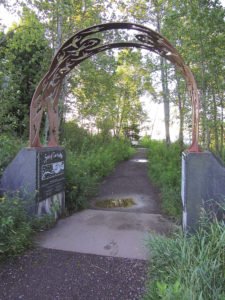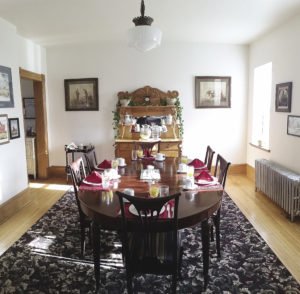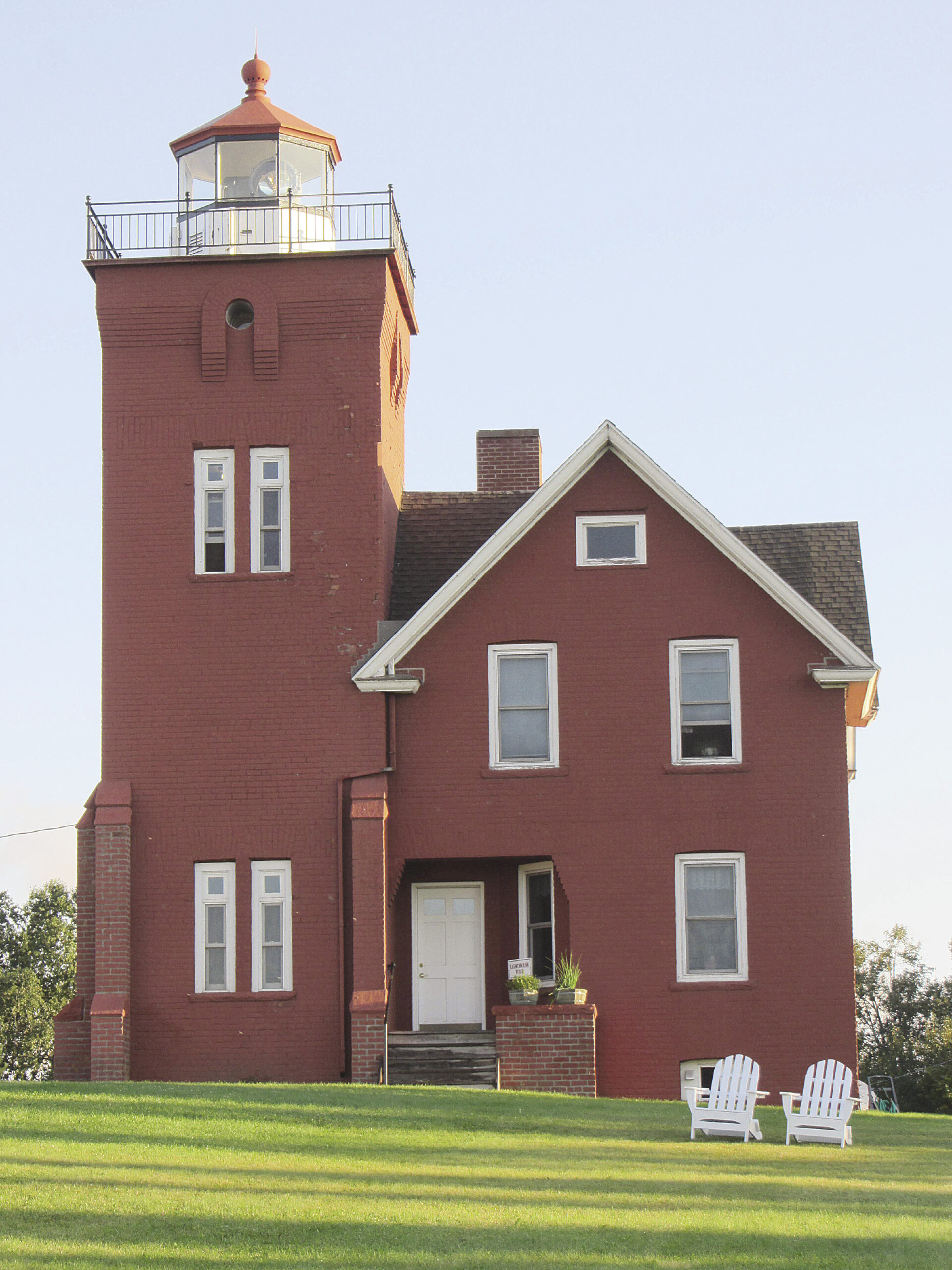Two Harbors—Those who stay at the Two Harbors Lighthouse Bed & Breakfast write many comments about their experiences there. One thing is common among them: Staying a few nights in a working lighthouse is a unique bucket list item. But it’s the extras around the lighthouse that guests also write about in this Lake Superior harbor city.
Aside from a beacon that has flashed over Agate Bay since the lighthouse station opened in 1892, nearby are working iron ore docks with the incoming and outgoing of ships that first necessitated the navigational aid. A long pier jutting into the bay provides closeups of the ore operation. Trails along the lake front, between Agate and Burlington bays, keep adventuring guests close to the big water.
Guests also say Two Harbors is a respite from the congested Canal Park in Duluth and even the busyness of Grand Marais in high season. You can lope around the city, shopping and eating and just sightseeing without waiting in lines.
History also makes it into guest comments. The B&B is run by the Lake County Historical Society, which has its home in the nearby train station. The society has historical maritime and pioneer displays across the lighthouse grounds and in its museum at the train station. It also runs the 3M Birthplace Museum nearby.
Part of the latest history here is the restoration of the lighthouse station and creation of the B&B. Twenty years ago, the state of the Two Harbors Light Station hit rock bottom.

In the summer of 1997, the one man who knew the intricacies of the aging boiler died. For years, the lighthouse heating system had been limping through winters, threatening even more damage to the deteriorating state of the 50-foot tall main structure that houses the beacon and lightkeepers quarters. The handful of buildings around it needed help as well.
Paint was peeling. Roofs leaked. Walls were streaked and crumbling. The grounds were choked with weeds. And, in the fall of 1997, the light went dark. For the first time in 105 years, there was no working beacon sweeping over Agate Bay.
The U.S. Coast Guard hadn’t paid much attention. Because of technological advances in seagoing navigation, lighthouses had become relics of the early 20th century. The Coast Guard still owned the station in the 1990s but had been leasing it to the historical society, which in turn provided tours with entrance fees that didn’t come close to providing enough profit to cover lighthouse upkeep. At the time, the much more visible Split Rock Lighthouse farther up the North Shore was bringing in 10 times more visitors.
By the late 1990s, people noticed how shabby the Two Harbors Light Station had become. One person wanted to do something about it. Liz Donley was a frequent visitor to Agate Bay, where the Duluth woman let her Labrador dogs swim. In 1996, she ran into a friend who had been living in a rental space at the lighthouse. That’s when Donley got a closeup view of the woes surrounding the place.
“It was pretty derelict,” Donley said. She has a soft spot for old buildings, she said, and had experience in restoration, a passion that allows buildings to tell “what their original glory may have been.”
Donley said she approached the historical society about volunteering to fix the place up. Members didn’t get why a person would do that, she said, but eventually she was allowed to dress up the grounds as a test to her commitment. She worked on flower beds, used the old fishing boats for displays, and planted 1,000 daffodil bulbs. It was family and friends who helped her that summer of 1996.
“I guess they realized I seemed to be true to what I was saying,” she said.
So Donley was there the next year when things seemed so dire. A plan was hatched with a friend who had “business sense” to fix up the lightkeepers residence for use as a bed and breakfast. Revenue from that enterprise could go toward keeping the station from falling into disrepair.

Donley and the historical society looked for volunteers to help, and money. The society estimated it would take $200,000 to get the station back in shape.
In 1998, the Coast Guard happily transferred ownership of the station to the society. By the summer of 1999, the B&B was open. Donley said everything wasn’t exactly how she envisioned but at least the place looked loved again.
Mel Sando, the current executive director of the historical society, said the bed and breakfast has never been busier. It brings in enough to be self-sustaining with a regular maintenance schedule.
What had been a novel business model 20 years ago has mushroomed into the norm as communities around the Great Lakes try to save their lighthouses, he said.
A 20 percent discount for rental of all the rooms at the station has proven popular, Sando said, allowing groups of eight to 10 people. The former skiff house outside of the lighthouse is the most popular option as it has private quarters. The three rooms in the lighthouse have shared common areas.
The iconic red-brick lighthouse tower, with its shining beacon, is always open for public tours through the museum at the railroad station.
Gone are the days of crisis, Sando said. “We’re not just putting out fires.”
Donley had a bemused laugh when told it’s been 20 years since those dark days for the lighthouse. She hasn’t been to the station in some time but still holds a vow she made all those years ago.
“I would promise to be the godmother of the lighthouse.”




